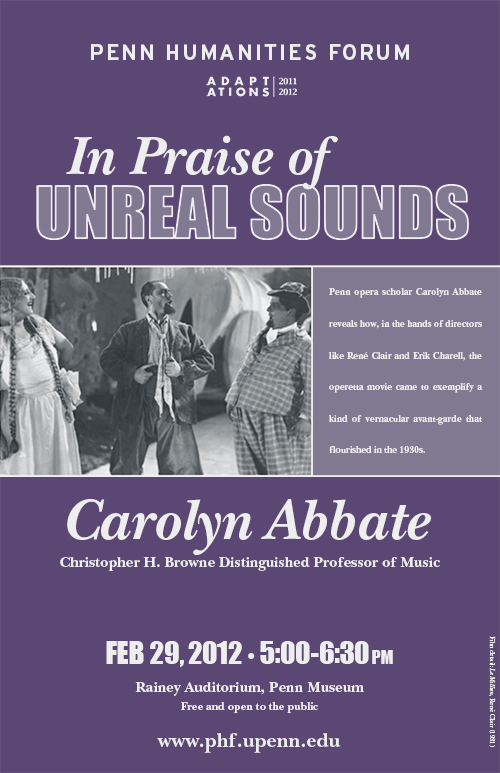The 1930s saw a flourishing of "operetta films" in France and Germany. These films attempted to use the conventions of opera within the new medium of sound film. The result was a curious aesthetic mélange in which narrative and visual kitsch coexisted with radical experiments in sound synchronization. Celebrated opera scholar Carolyn Abbate explains how, in the hands of directors like René Clair and Erik Charell, the operetta movie came to exemplify a kind of vernacular avant-garde.
Carolyn Abbate is one of the world’s most renowned musicologists. Her research has mainly focused on opera from its beginnings around 1600 to the mid-twentieth century. She has also written about instrumental traditions from the Enlightenment to the present, and, in recent years, about film music and sound technology. Author of In Search of Opera (2001) and Unsung Voices (1991), and co-author with Roger Parker of the forthcoming Opera: The Last Four Hundred Years, she is the recipient of a Guggenheim Fellowship, a Dent Medal of the Royal Music Association, and two fellowships from the National Endowment for the Humanities.
In addition to her teaching and scholarship, Dr. Abbate is an ardent practitioner of “public musicology,” lecturing to diverse audiences of non-specialists, writing for mainstream journals, and participating regularly in the opera quizzes that enliven the Metropolitan Opera’s weekly radio broadcasts. Before joining Penn as the Christopher H. Browne Distinguished Professor of Music, she held appointments at Harvard, Princeton, the University of California, Berkeley, and the Freie Universität, Berlin.
Christopher H. Browne Distinguished Professor of Music
University of Pennsylvania



